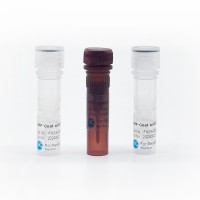Assay for Protein Modification by Poly-ADP-Ribose In Vitro
互联网
互联网
相关产品推荐
![PARP9/PARP9蛋白/ADP-ribosyltransferase diphtheria toxin-like 9
B aggressive lymphoma protein
Poly [ADP-ribose] polymerase 9蛋白/Recombinant Human Poly [ADP-ribose] polymerase 9 (PARP9), partial重组蛋白](https://img1.dxycdn.com/p/s14/2024/0807/931/4874189879496701281.jpg!wh200)
PARP9/PARP9蛋白/ADP-ribosyltransferase diphtheria toxin-like 9 B aggressive lymphoma protein Poly [ADP-ribose] polymerase 9蛋白/Recombinant Human Poly [ADP-ribose] polymerase 9 (PARP9), partial重组蛋白
¥69

Coronavirus Nucleocapsid重组蛋白|Recombinant SARS-CoV-2 Nucleocapsid-AVI&His recombinant Protein,Biotinylated
¥4520

重组人 p38 delta / MAPK13 蛋白 (Activated in vitro, GST标签)
¥3220

Poly-HRP-Mouse Anti-Human IgA
¥840

SARS-CoV-2 (2019-nCoV) Nucleocapsid/N Antibody Titer Assay Kit | SARS-CoV-2 (2019-nCoV) Nucleocapsid/N Antibody Titer Assay Kit
¥5000
相关问答

